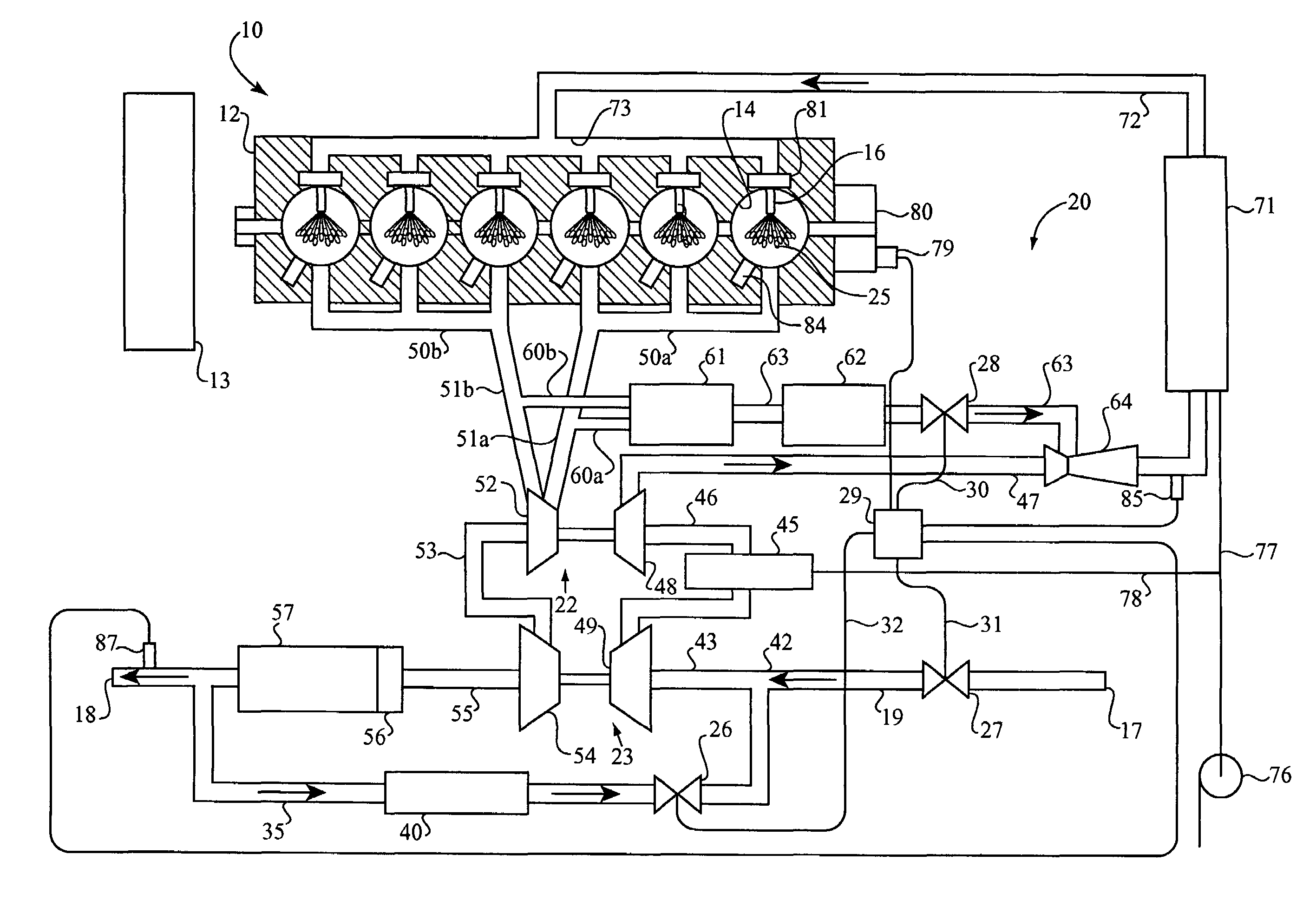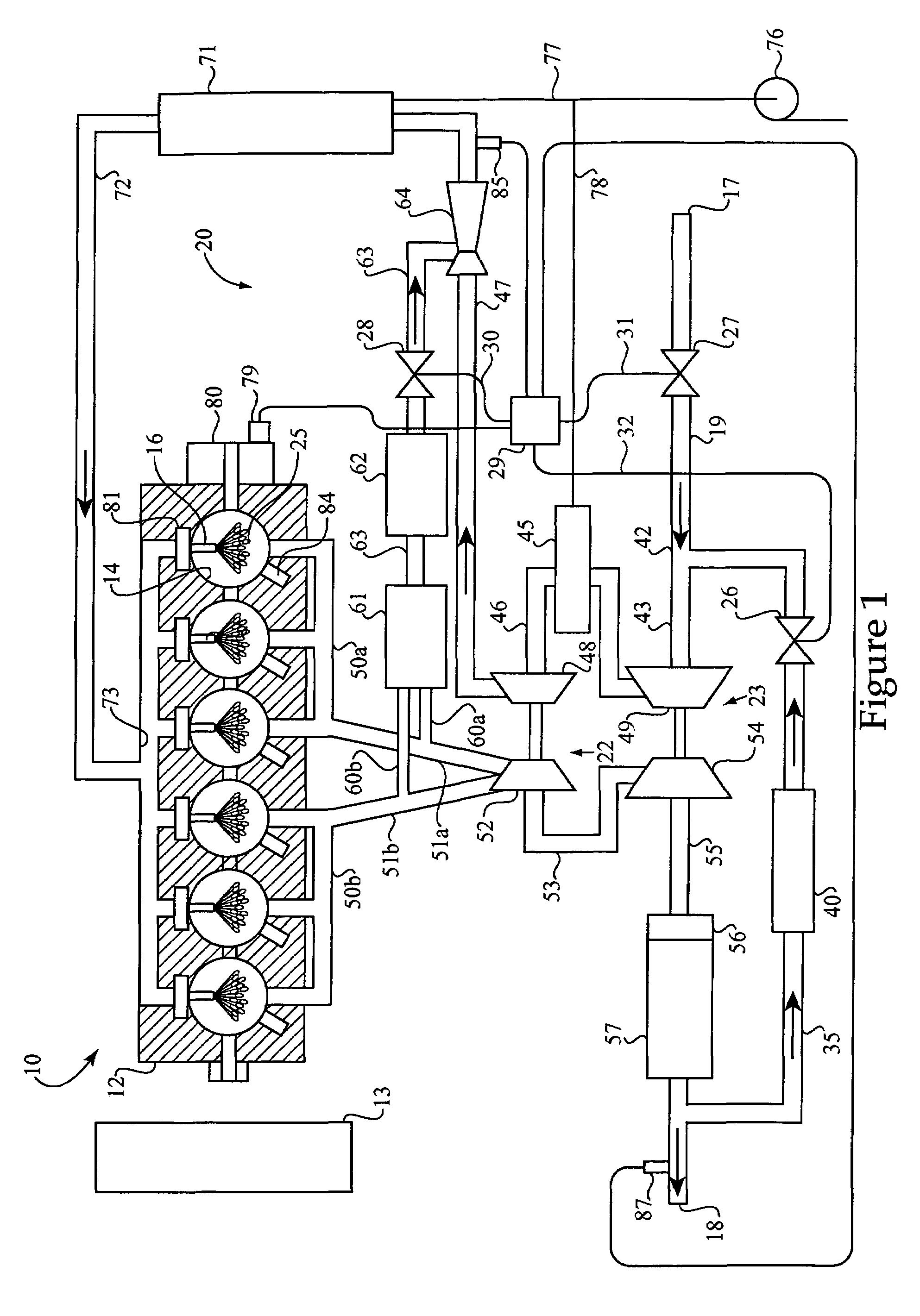High load operation in a homogeneous charge compression ignition engine
a technology of compression ignition and high load, which is applied in the direction of electrical control, process and machine control, instruments, etc., can solve the problems of extreme sensitivity and difficulty in controlling ignition timing, hcci engines can have difficulty in operating in higher load ranges, and pressures can get so high as to exceed the structural containment capability of engine housings
- Summary
- Abstract
- Description
- Claims
- Application Information
AI Technical Summary
Benefits of technology
Problems solved by technology
Method used
Image
Examples
Embodiment Construction
[0016]Referring to FIG. 1, a homogeneous charge compression ignition engine 10 includes an engine housing 12 that includes a plurality of cylinders or combustion chambers 14 disposed therein. In the illustrated embodiment, engine 10 includes six cylinders 14, but those skilled in the art will appreciate that engine 10 could include any number of cylinders without departing from the present disclosure. Engine 10 includes a conventional radiator 13 along with a cooling system (not shown) to cool the engine in a conventional manner. Each cylinder 14 preferably includes a fuel injector 16 positioned for direct injection of liquid fuel into the individual cylinders. Furthermore, each fuel injector may include a nozzle tip configured to produce a shower head spray pattern 25 in which fuel injection plumes point at a plurality of different angles with respect to a fuel injector centerline. Furthermore, the fuel injection holes may be constructed using known laser drilling techniques to ach...
PUM
 Login to View More
Login to View More Abstract
Description
Claims
Application Information
 Login to View More
Login to View More - R&D
- Intellectual Property
- Life Sciences
- Materials
- Tech Scout
- Unparalleled Data Quality
- Higher Quality Content
- 60% Fewer Hallucinations
Browse by: Latest US Patents, China's latest patents, Technical Efficacy Thesaurus, Application Domain, Technology Topic, Popular Technical Reports.
© 2025 PatSnap. All rights reserved.Legal|Privacy policy|Modern Slavery Act Transparency Statement|Sitemap|About US| Contact US: help@patsnap.com



